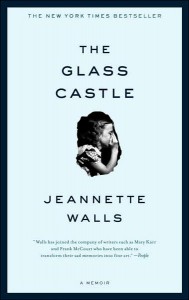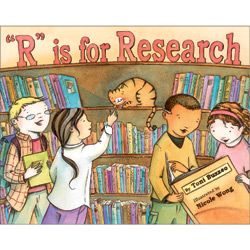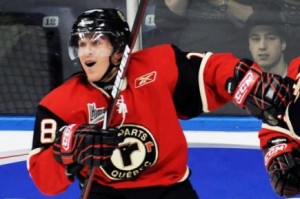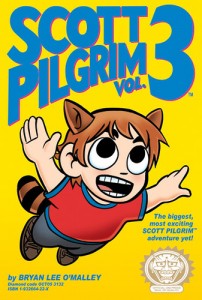The Return of the Link Dump
Autumn has arrived once again and with the changing of the leaves comes the busiest time of the year in the world of sports.
That applies to the journalists who cover sports as well, so this blog has fallen into disuse for the past week as I’ve been cranking out articles for other outlets. Here’s a quick rundown:
On Tuesday the Globe and Mail (and other websites) ran an article I wrote about the Ontario Hockey League indefinitely postponing their All-Star Game.
Wednesday the Winnipeg Free Press picked up a bit of an OHL season preview I did.
I’ve been busy over at HockeyPrimeTime.com as well, writing pre-season looks at the Northeast Division starting with the Boston Bruins and then moving on to the Buffalo Sabres, Montreal Canadiens and the Ottawa Senators before finishing with the Toronto Maple Leafs.
Hockey’s not the only sport I’m following this fall either, as field lacrosse has started up. I’ve got a vested interest as I’m continuing my involvement in the Canadian University Field Lacrosse Association as its Communications Director.
I’ve already written a review of the first week of play for the league’s website and I'll be penning a second one today.
That’s a quick update for you, but you should expect more content from me in the next week, starting with the return of My Weekend in Junior Hockey on Monday.
Graphic Novel Review – Scott Pilgrim by Bryan Lee O’Malley
Hello. My name is John and I’m a male comic book fan from Toronto.... and, um, I don’t really like the Scott Pilgrim series of graphic novels.
I know, that’s total heresy to some people, but it’s true. I do not enjoy the series. Although I enjoyed the film starring local hipster hunk Michael Cera, I just can’t get into the graphic novels, try as I might. They’re just not my bag.
For the uninitiated: Scott Pilgrim is about the blossoming relationship between the titular hero and his American sweetheart Ramona Flowers. To win the day and the girl, all Scott needs to do is get a job, mature as a person and, oh yeah, defeat her seven evil exes in fights to the death.
The books are heavily influenced by anime, comic books and especially video games. Scott’s band is called “Sex Bob-omb”, combining Tom Jones with one of the more obscure villains from the Super Mario games. There’s a lot to like in that concept, but it just never clicked for me.
This isn’t about going against the grain either. I’m not saying I dislike it just to fly in the face of indy scenesters everywhere. I was actually on board with the series pretty early on. In fact, when I was in undergrad I worked at a very large bookstore in downtown Toronto one of my co-workers was wild about Scott Pilgrim.
When she learned that I was a fellow comic book nerd she insisted I catch up on the series - at that point only three of the six books had come out – and so I dutifully bought the first volume (Scott Pilgrim’s Previous Little Life) and demolished it in about 30 minutes of dock-side reading at a cottage.
There was certainly a lot to like about the book. It had its funny moments, particularly the climactic battle with Matthew Patel, and the characters had some charm. As a young man in Toronto working in a mind-numbing retail job, I had some sympathy for Scott.
Unfortunately, it was also crowded with too many of Scott’s friends and peers, and O’Malley’s artwork wasn’t sophisticated enough to make it clear who was who. Characters bled together on the page and in my mind.
Also, although I could I identify with some aspects of his life, Scott is the kind of person I’ve got little patience for in real life. He’s directionless, insensitive and oblivious to his surroundings. His friends are huffy and prone to inexplicable bouts of anger while hating their dead-end jobs.
If they were real people, I’d go out of my way to avoid them.
So after that first book I gave up on the series and moved on. When inevitably confronted by a hysteric Pilgrim-fan - they are legion in Toronto’s Annex neighbourhood - I’d politely shy away from the subject and explain I was really behind on my reading.
But the film trailers grabbed my attention and I went to see the Edgar Wright-directed movie on opening weekend. After all, it’s a movie that prominently features my hometown and I’m a sucker for all things Toronto.
It was smart, fun and moved quickly. The acting, particularly Cera in the title role and Kieran Culkin as his roommate Wallace Wells, was sharp and witty. I loved it.
That experience, coupled with reports from many friends that the art and writing improved with each book made me think I should give the series a second chance. I borrowed the remaining volumes from the library -Wychwood Branch, a prominent location in the series - and see if the books could redeem themselves.
Well, they didn’t. I still didn’t really like any of the books.
Although I got a better handle on who all the characters were, many were still incredibly whiny. There were too many throwaway scenes, too many pages of Scott lying around on his couch in a sulk. Characters fly into rages for no apparent reason, storming off dramatically to prove their invisble point.
I hated that kind of histrionics when I was in my early 20s, and I’m not keen to re-live it in graphic novel form.
Don’t get me wrong, there are some positives in these books. As far as a coming-of-age story, Scott Pilgrim is very good. There is a real sense of maturation in our hero and he really does develop into a more sensitive and thoughtful person. His complex relationship with Ramona is handled by O’Malley with a deft touch and there is much to be learned from both of them.
The books are also occasionally entertaining. There are pages and scenes that are legitimately funny and seeing stores, restaurants and clubs that I’m intimately familiar with printed on the page never really got old. But all that isn’t enough to overcome some of the deep flaws in this series.
Bryan Lee O’Malley’s Scott Pilgrim series is a fine entry point to the world of graphic novels, but there are at least a dozen other books that a neophyte fan could start with that would be more satisfying. It’s probably best to just watch the Michael Cera movie and then seek out recommendations that are like the books.
Book Review – The Glass Castle by Jeannette Walls
 I never thought that I’d enjoy Jeannette Walls’ the Glass Castle, but I was wrong.
I never thought that I’d enjoy Jeannette Walls’ the Glass Castle, but I was wrong.
On the surface, it looked like it was more for stay-at-home moms. It was one of Heather’s Picks at Chapters-Indigo Bookstores and reeked of Oprah’s Book Club. But once I started reading it I appreciated Walls’ writing and was moved by her story.
Like Frank McCourt’s ultra-popular Angela’s Ashes, the Glass Castle is a dark memoir about a dysfunctional family crippled by the father’s alcoholism and the mother’s loose grip on reality.
The Glass Castle also follows a very similar format to Angela’s Ashes with each short chapter detailing an episode from the childhood of the author. More often than not these are horrible snapshots of poverty or struggle as the Walls’ household disintegrates.
These grim anecdotes are broken up by some funny stories from Jeannette’s childhood and the reader is buoyed up by the loyalty of her three siblings as they try to support each other and overcome their parents’ shoddy upbringing.
Walls’ writing is very good and although the subject matter is depressing and unsettling, she wisely injects some humour to create some balance.
What interested me the most was the social dynamics within the Walls household. Jeannette and her three siblings all independently come to the conclusion that their parents are unfit to raise them and that they need to take matters into their own hands.
Writing a compelling memoir is difficult. I’ve read many autobiographies that tell the author’s life story chronologically and from a single perspective. That’s a totally fair and natural way to structure a narrative, especially since an omniscient narrator would be some trick, but it’s obviously also quite limiting.
But Walls – a long-time journalist and former blogger with MSNBC.com – does well to flesh out the “characters” of her family and imply the feelings and motivations of each relative. This adds depth to her story that most autobiographies lack. The way her parents and sibling handles each situation is unquestionably real.
Walls is also a reasonably fair and balanced narrator. Her family might not be thrilled with their personal histories being exposed, but it’d be hard for any member of the Walls clan to say that Jeannette did them a disservice. She lets their actions speak for themselves and rarely puts words in their mouths.
Normally I would dismiss the Glass Castle out of hand. But Walls’ incredible storytelling abilities and the devastating circumstances of her childhood make this memoir a must-read for any fan of literature.
Public funding of stadiums should come with a caveat
David Asper made an articulate argument for the public funding of stadiums in today’s National Post, that focused on sport’s role in culture and how athletics should be treated as the equal of art and drama.
Asper, a guest contributor to the Post, is a law professor at the University of Manitoba as well as a successful businessman who is spearheading the movement for a new community-owned football stadium in Winnipeg.
However, Asper’s argument is framed in the context of the proposed hockey arena in Quebec City that would help bring the National Hockey League back to the capital of la Belle Provence. His article supports Prime Minister Stephen Harper’s recent declaration that the federal government would consider aiding the project.
“Governments at all levels in Canada have an easy time providing billions of dollars annually toward artists and their cultural organizations — many of which are just as ‘professional’ as NHL athletes and teams,” writes Asper.
“Similarly, governments often have little or no problem funding concert halls, theatres, art galleries and other bricks-and-mortar venues where cultural events are performed.”
Although Asper’s clearly got a bit of a bias, he makes a compelling argument. There’s no denying that sport is a part of culture and that all levels of government support artistic enterprises in the name of improving society and contributing to Canada’s collective heritage.
Of course, Asper is conveniently forgetting the fact that the Harper government controversially cut back support to the arts not so long ago and that although there are some musicians, filmmakers and artists who make a healthy living, there are just as many who do not. Professional sports, particularly an NHL franchise in Canada, would be a different animal.
Despite that glaring flaw in his article, it is undeniable that Asper has a point – sport is certainly a worthwhile investment for all levels of government, not just for cultural reasons but also because it encourages healthier lifestyles in citizens.
But those financially allotments should always come with community-oriented strings attached.
These projects shouldn’t just be about generating tourist income and a sense of civic pride – they should also be used to create facilities and programs that can be shared by the public and to encourage athletics at the amateur and recreational levels.
For example, the City of Toronto did well when they agreed to support the creation of BMO Field on the condition that its soccer pitch would also be used for local recreational leagues.
Unfortunately, Toronto City Council’s lawyers didn’t read the fine print just right and Maple Leaf Sports and Entertainment blocked the oft-discussed possibility of moving the Argonauts to BMO Field.
But the stadium is used for recreational soccer leagues and has turned the Canadian National Exhibition Grounds into a hub of activity year-round. The city also got the added bonus of having MLSE, along with the Toronto Nationals of Major League Lacrosse, rehabilitate Lamport Stadium, revitalizing a wreck of a facility that is also being used for amateur sports.
That is how governmental sponsorship of stadiums, arenas and professional sports can pay off - by insuring that these professional teams partner with their local communities to implement athletic programs that will grow sports at the grassroots level. It engages the community, creates fans and helps to develop a unified civic culture.
Research makes perfect
 I’ll be the first to admit that I’m a rookie at this professional writing game. Indeed, if there’s one thing I’ve learned in my past year with the Canadian Press, it’s that I don’t know how much I don’t know.
I’ll be the first to admit that I’m a rookie at this professional writing game. Indeed, if there’s one thing I’ve learned in my past year with the Canadian Press, it’s that I don’t know how much I don’t know.
Sure, as a young Canadian male I’d watched more hockey than the average person. But there’s no way I’ve seen as much hockey as some of the big name experts like TSN’s Bob McKenzie and Darren Dreger of the CBC’s Scott Morrison, Don Cherry and Ron MacLean.
No, I definitely still have a lot to learn about the game and the sports journalism business in general.
The only acceptable recourse is to keep striving by working at my craft and doing research to broaden my knowledge base.
This is actually a personal belief that I’ve held for a long time. In fact, last month I was asked to speak to the current cohort at Centennial College, my sports journalism alma mater, and I made a point of talking about the importance of continuing the learning process even after school is done.
After all, sports journalists are required to interview athletes and coaches who have dedicated their whole lives to their sport. They know it inside and out. If we want to engage them and extract thoughtful quotes from them, we need to know what we’re talking about.
That’s one of the many reasons I decided to go to the World Hockey Summit. It was the ideal place to meet with hockey people at the grassroots level and learn about the issues facing the sport today. As you can tell from my four-day diary of the conference, it was an incredibly educational experience.
As I announced yesterday on my Twitter feed the Canadian Press has brought me back for another year as their junior hockey editorial assistant, and so I’m getting down to some serious research.
I’ve begun an email-writing campaign, introducing myself to all the media relations people of the Canadian Hockey League.
Whether it’s the head office here in Toronto, the regional offices of the Quebec Major Junior Hockey League and the Western Hockey League or the teams from Sydney, Nova Scotia to Prince George, British Columbia, everyone has or will hear from me.
The idea is to discover the stories behind each organization. Many of them have already sent me their media guides or are putting me on their mailing lists. Hopefully, these contacts and these press kits will help me come up with more and better feature stories and add further colour to my game stories.
Already I’ve benefitted from this initiative – this morning I was invited to listen in on the QMJHL’s season-opening press conference.
Amongst other pieces of news, league president Gilles Courteau explained that there is a gentleman’s agreement between the AHL and the Quebec-based association to not spread into New England. I was live Tweeting the call and when I mentioned that tidbit I got a big reaction from many followers.
I’m sure that all this work, all this research, will bear more fruit, I’m just not sure how. After all, I don’t know how much I don’t know. But that’s why I’m doing all this research – to try and improve myself as a journalist.
It’s time for a Women’s National Hockey League
 During the final day of the World Hockey Summit it became abundantly clear that Hockey Canada, USA Hockey and especially the National Hockey League need to become more proactive in the growth of women’s hockey.
During the final day of the World Hockey Summit it became abundantly clear that Hockey Canada, USA Hockey and especially the National Hockey League need to become more proactive in the growth of women’s hockey.
It’s something that has been at the back of my mind since the Winter Olympics in Vancouver last February – how can an exciting game like women’s hockey only really be seen on TV every four years? What can be done?
Outside of the collegiate game in the United States and Canada there is no forum for elite women’s hockey. Even at the amateur level there are many municipalities that don’t have leagues for female players, and at the World Hockey Summit there were stories of towns that won’t let women use the arenas, period.
Further, there is no junior hockey for ladies - although women are allowed to play in the three leagues that comprise the Canadian Hockey League.
At the professional level there have been several attempts at running leagues, including the Canadian Women’s Hockey League that has teams in Montreal, Mississauga, Burlington, Brampton, Vaughn and Ottawa.
The CWHL competes for the Clarkson Cup against teams from the Western Women’s Hockey League. The WWHL has franchises in Calgary, Edmonton, Winnipeg, Strathmore and Minnesota.
Although I admire these leagues ambitions, they’re unstable with teams folding or relocating constantly. Other leagues like them have collapsed under the financial and administrative strains of running a professional association.
This is where the NHL needs to step in, and form a WNHL, much like the National Basketball Association’s WNBA, to market and promote a high-calibre female version of hockey.
Like the WNBA model, all the teams could be owned by the NHL or its franchises at first, and as they become more solvent be sold to third parties. Every team would be associated with an NHL or American Hockey League franchise to guarantee cheaper access to facilities and to enable cross promotion.
It would be an easy sell to have a NHL/WNHL double-bill in several traditional hockey markets like the Original Six, in the six Canadian NHL cities and a few other hotbeds like Minneapolis.
Further, when I threw it out to my Twitter followers last week, reader @katylalonde pointed out that there are several locations begging for hockey like Winnipeg, Kitchener, Hamilton and Quebec City. It would be a smart move for all four municipalities to invite a WNHL franchise to their rinks and prove that their arenas are viable venues for professional hockey.
Of course, such an initiative would have to be supported at the amateur level. Hockey Canada, USA Hockey and regional associations would need to do more to promote the women’s game at the amateur level. But with professionals serving as role models, it shouldn’t be too hard.
This is the kind of program that is prime for implementation - all it would takes is a motivated NHL willing to capture the interest of a whole new market of hockey fans.



